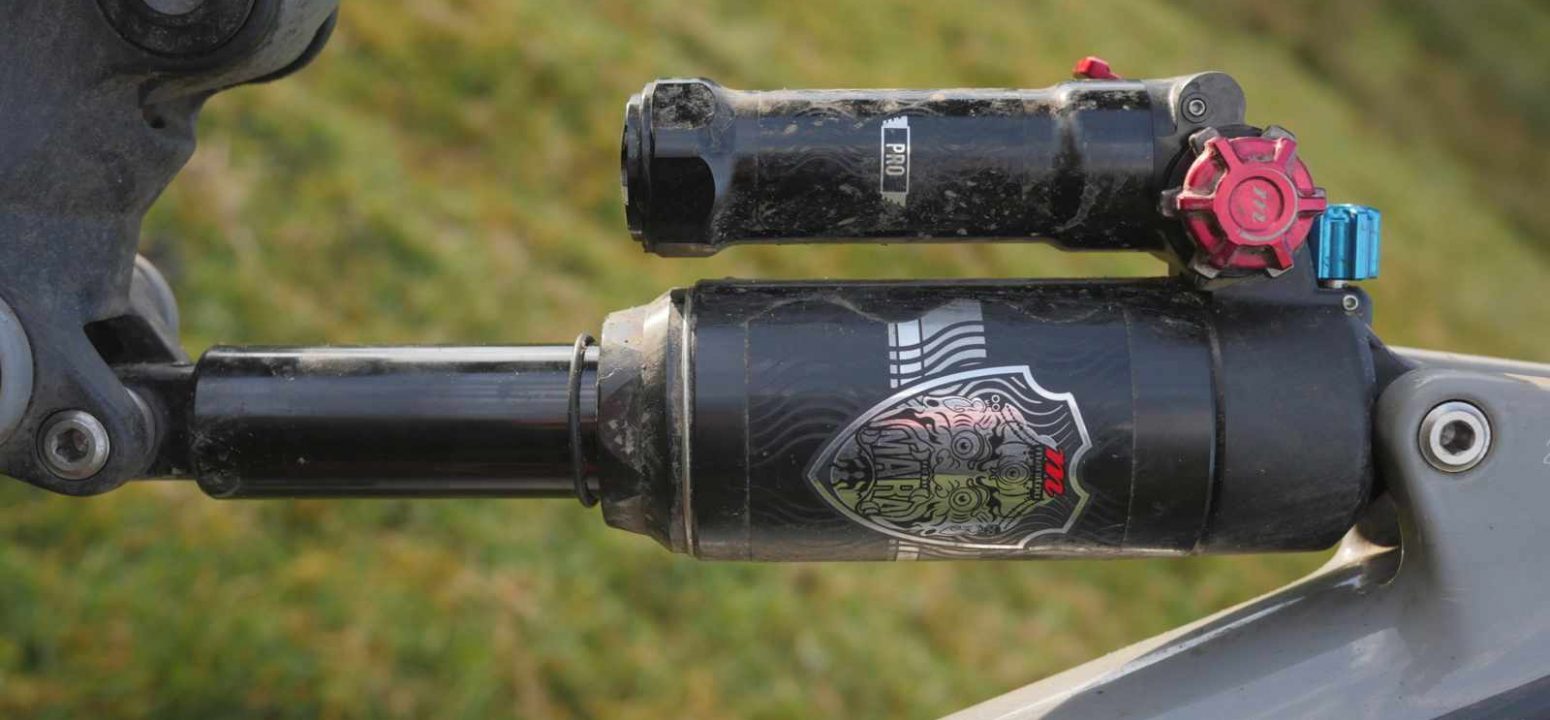Manitou, and parent Hayes Group have spent a while focussed on enduro-type products, from forks, to brakes, wheels and now this new Mara Pro shock.
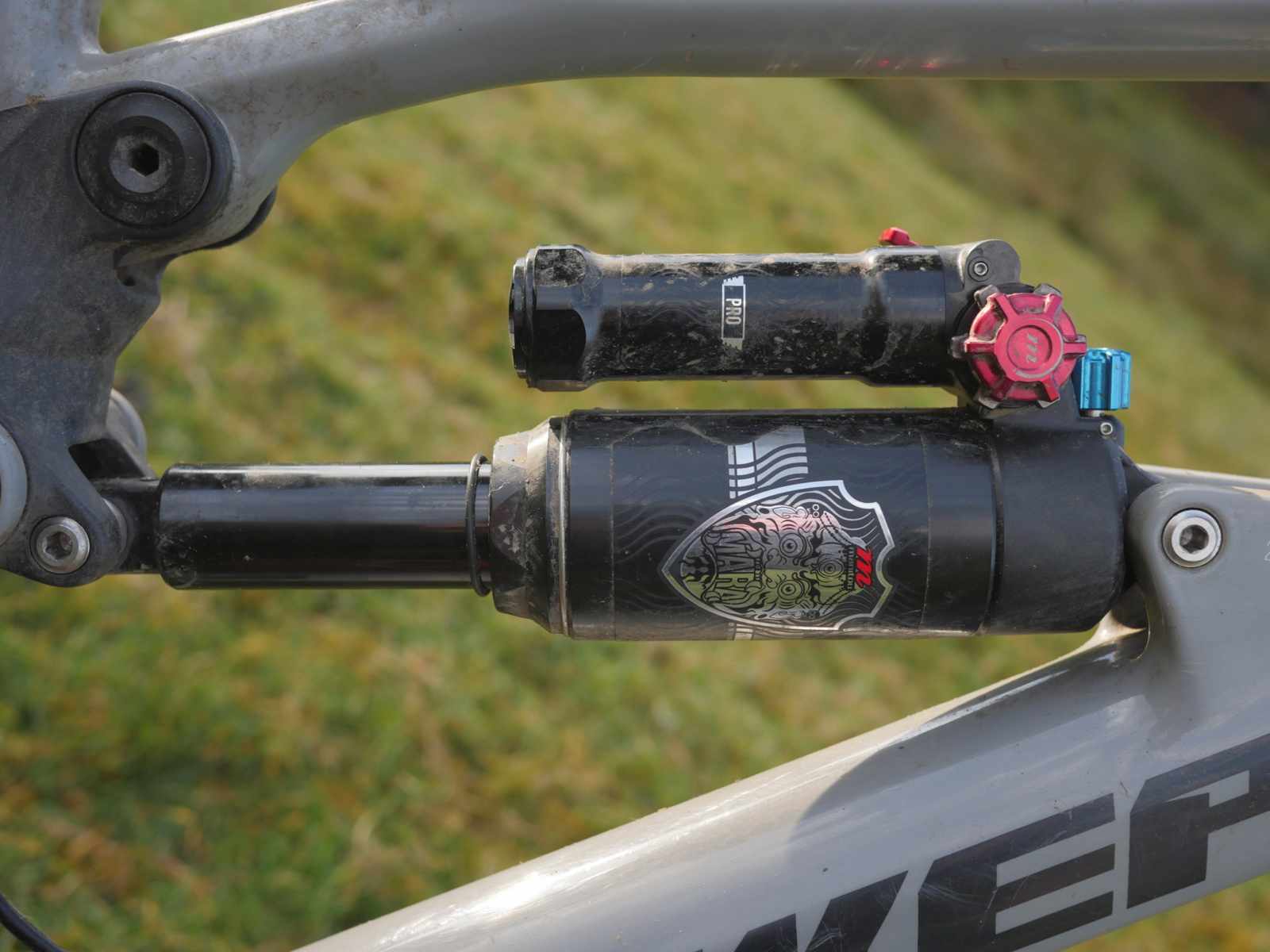
In Sanskrit, the word mara means “death”, which is pretty much the exact opposite of what I’d hope to get out of any mountain bike product. Am I writing this from beyond the veil? Read on to find out.
For Whom The Vengabus Comes
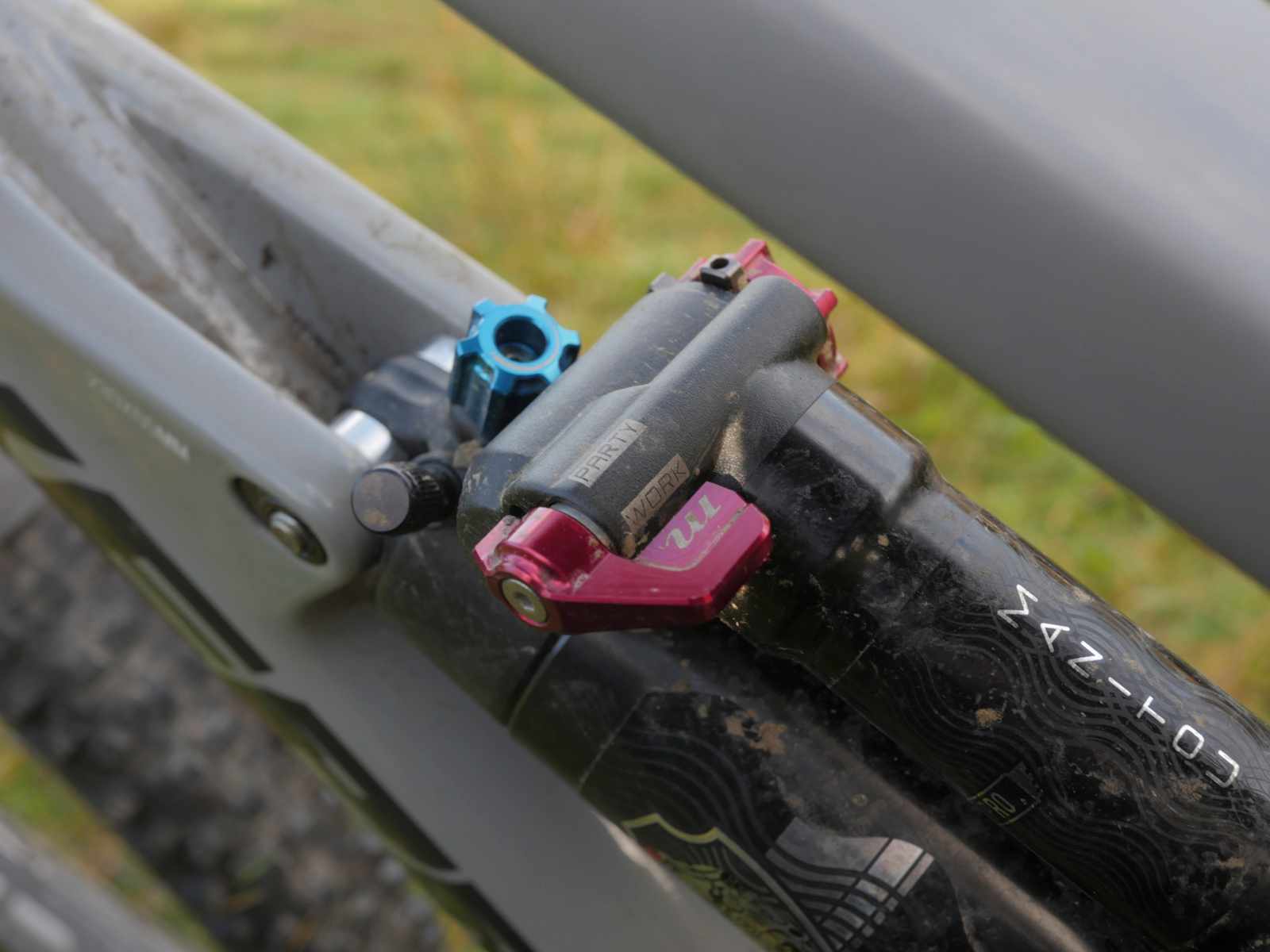
The first thing everyone notices on the Mara is the Work/Party switch. Two modes, with no fully rigid lockout, just one setting much firmer than the other. Beyond that, it has dials for rebound, low speed compression, and high speed compression.
One of the most notable internal parts is the hybrid IFP (internal floating piston). There are broadly two schools of design when it comes to separating oil and air in a shock: IFPs made of some kind of rigid plastic, and flexible bladders. IFP based designs are typically cheaper to build and maintain; bladder systems can give greater sensitivity but are more expensive to manufacture.
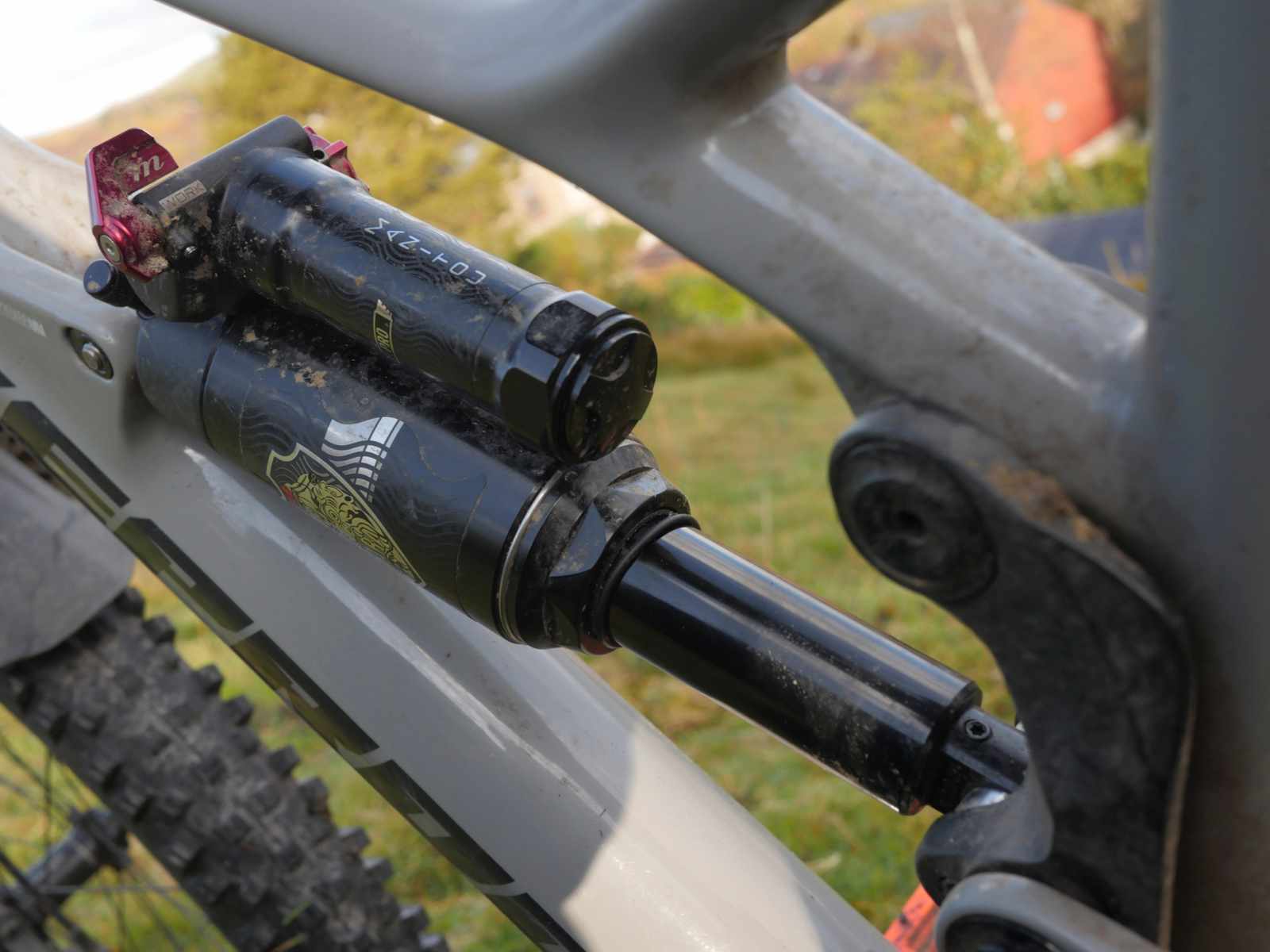
Manitou, working with SKF, have developed a hybrid IFP. The sides are like a conventional one, but in the centre is a membrane, giving it bladder-like behaviour and corresponding greater sensitivity to small inputs. Most IFP based shocks won’t start to move for small bumps before breaking the stiction of that IFP. The membrane in this design means that the shock can move very slightly before the IFP does inside it, giving much finer small bump compliance at your rear wheel.
Internally, it uses four shim stacks to separate different aspects of the shock performance. The main compression stack sets the basic damping and overall shape of the compression curve, the main rebound stack does the same for you-can-guess-what, a separate compression adjuster stack allows you to fine tune high speed compression on top of the main compression setting, and then finally a platform shim stack sets the blowoff force for Work mode.

Concealed under a cap on the end of the piggyback reservoir is an air valve for the IFP air chamber. That IFP air chamber is not, as I first mistook it, the negative spring, which is part of the air can assembly.
The IFP chamber is filled with nitrogen to 150PSI during assembly, which is lower than most piggy-back chamber pressures. This and the Schrader valve are both there in the interest of user serviceability, so it can be filled with air by a standard shock pump. Changing pressure in that IFP chamber will alter small bump compliance, but I certainly never felt a need to change it from stock.
The shock I was testing was very much the off-the-shelf build, but in future there will be customisation options in the form of different air cans, volume spacers, and shim stack units. Those shim stacks will come in the form of high+low speed compression tunes, and platform units to tune work and party modes separately to compression damping.
Work/Party Ethic
Being lucky enough to have Manitou engineers on the end of the phone, this shock came complete with a brief interview about my riding and the bike, leading to specific setup recommendations. Unfortunately this service is a journalist special and not included with every shock purchase, but setup is simple enough, like any other shock: Back off all the damping, pressurize to set sag, find your critical damping point with the rebound, then tweak high and low speed compression to suit.
My recommended setup was 120 – 140PSI in the main air spring, rebound -4 or -5 clicks from the maximum of +12, high speed -3 or “maybe” -2 from the maximum of +6, and low speed about +16 to +18 clicks from slowest, out of a maximum range of 24 clicks (“20 will be more of a downhill setup”). Mostly, this starting point was fine and I didn’t end up far from it.
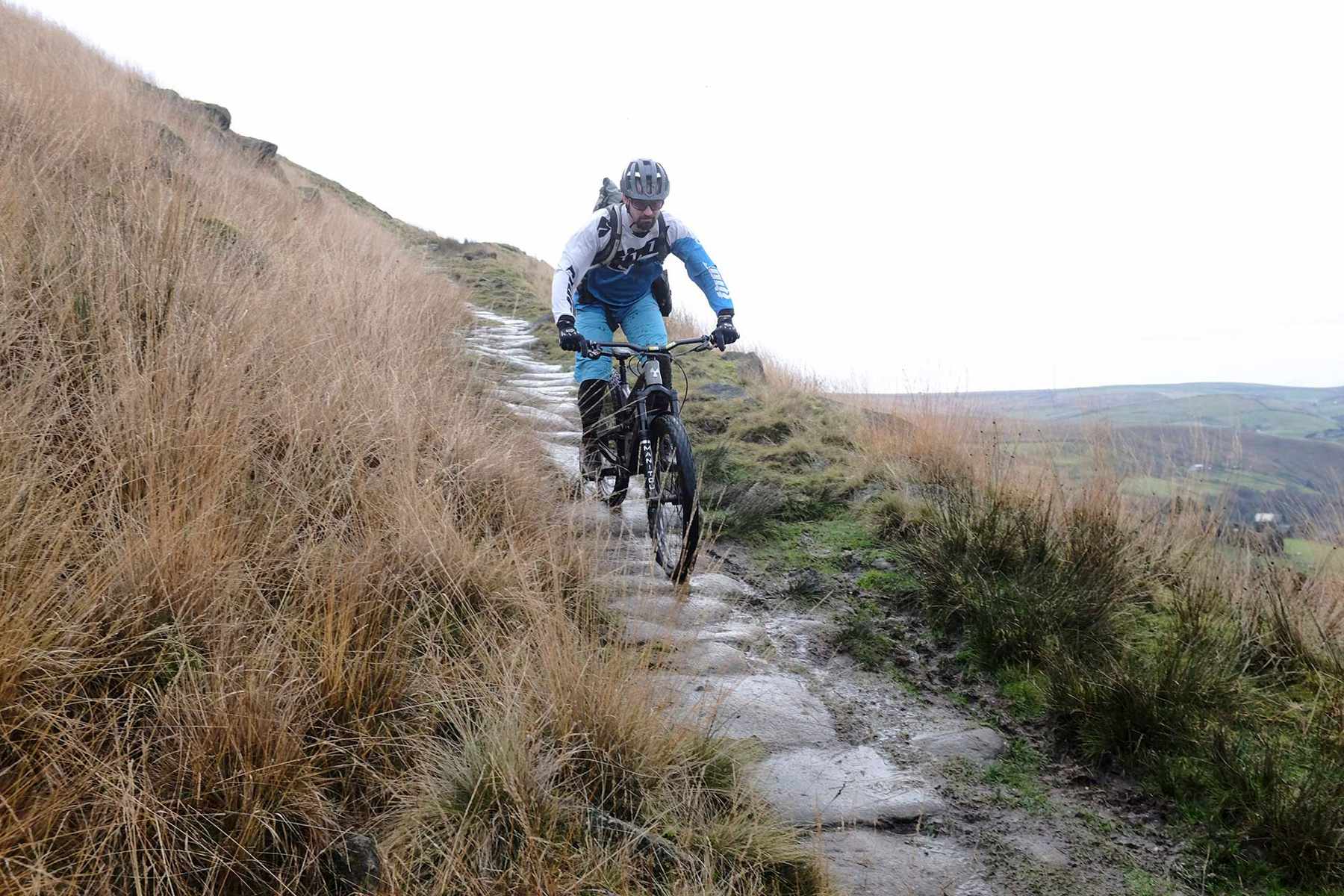
For the shakedown ride, I ended up at 135PSI in the spring, plus initial setup above. Damping felt good, but rebound was a touch harsh at first, feeling like the shock was pushing me onto the handlebars. I slowed rebound down a couple of clicks and it then felt great with the Mezzer fork setup I’d previously settled on using another shock. I didn’t touch settings for the whole day after that and was getting near max travel without really booting it.
Over the rest of the test, through gradually declining weather conditions as winter hit, I didn’t alter the spring pressure at all, just reduced the compression damping a bit as trails got sloppy.
We Like To Party
Work mode in this shock isn’t super firm, because it’s designed for off- rather than on-road climbing. Seated road climbing is fine, stood up it bobs a tiny bit as you’d expect, but isn’t super bouncy or anything. It’s supple enough to maintain traction when you’re scrabbling up anything technical. Overall, I think the default tune hits a good balance. It never felt like it was sapping me of energy on climbs, and I do like the simplicity of a switch with only two positions.
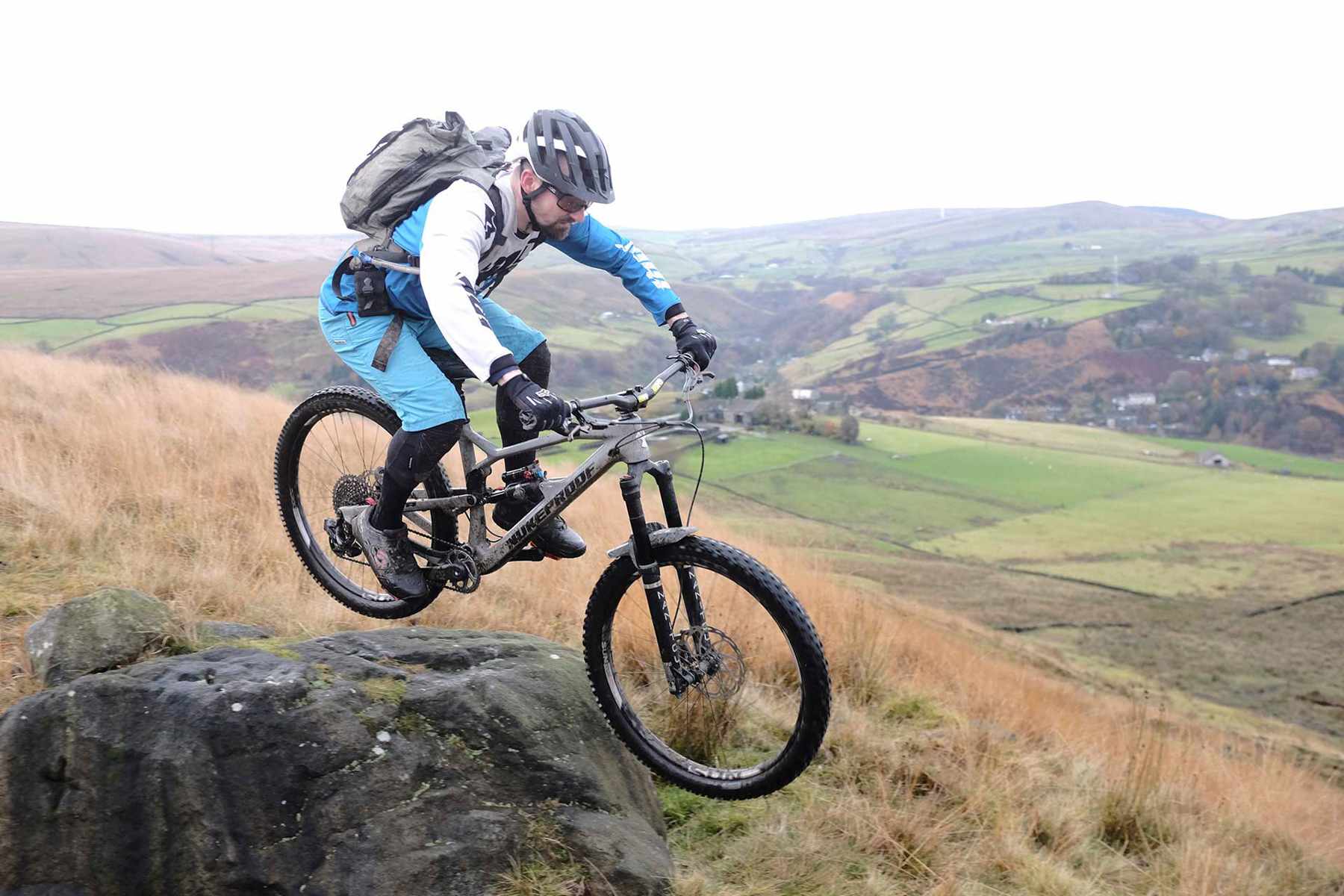
As soon as you knock that switch into party mode, tinny synths sound nearby and your bike is READY. I did plenty of rides on the Mara, and found it to be a very capable shock, but nothing quite tells you how something is performing like back-to-back comparisons.
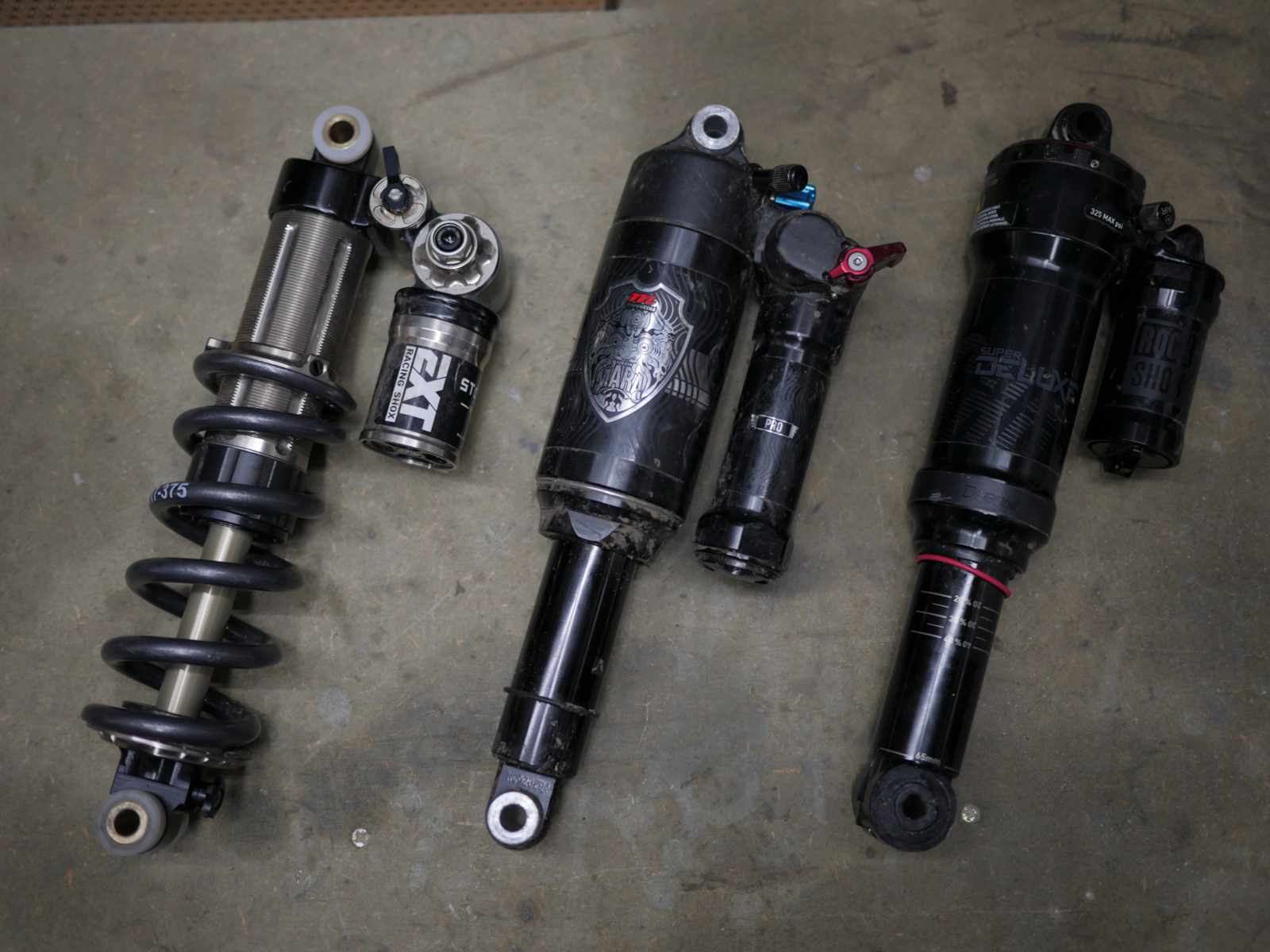
In one afternoon, I tested the Mara against several other shocks using the same bike (a Nukeproof Mega 275c). The test loop was a short one local to me, taking in a couple of descents; one grassy, the other rocky. Comparisons were with a RockShox SuperDeluxe, and an EXT Storia LOK V3 coil shock. To be clear: none of these are bad shocks, but they exist at very different price points. Compared to the SuperDeluxe, the Mara’s small bump compliance really shone, and I’d say at identical sag it has slightly better mid-stroke support and progression too. Overall, that translates into better traction and comfort for the Mara.
Being one of the most refined and expensive coil shocks out there, the EXT is not really a fair comparison to either of these air shocks, but small bump compliance does place the Mara closer in feel to the EXT, for around half the money. I didn’t find myself riding quite as aggressively with the Mara as the EXT, but the Mara is a significant upgrade over the SuperDeluxe, so if you’re thinking of replacing an OEM shock, it definitely deserves a place on your list.
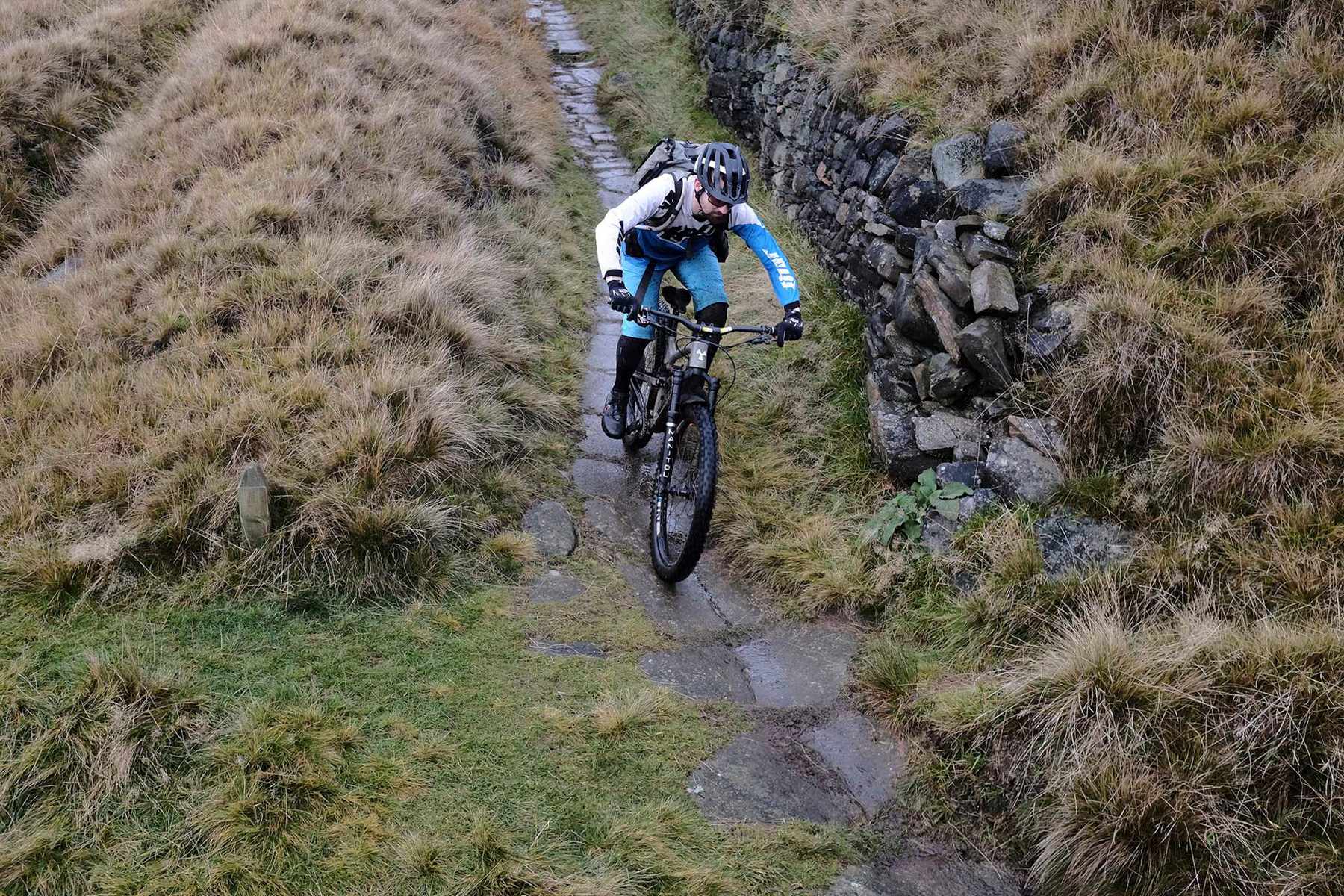
From steep grassy descents and rocky chutes, slow tech to lightspeed straight lines, successive hits and five foot drop offs, the Mara never struggled. It’d get close to bottom sometimes, but it has a good gentle ramp up and I never felt a harsh bottom out. After setup, I only tweaked settings to suit weather and trail conditions, and aside from that, it was set-and-forget. If I had to pick one criticism, it would be that with my setup it wasn’t an especially poppy shock, but I don’t ride bike parks often so don’t need that. I’m more at home thrashing down part-time stream beds, and this is well suited to that kind of chop.
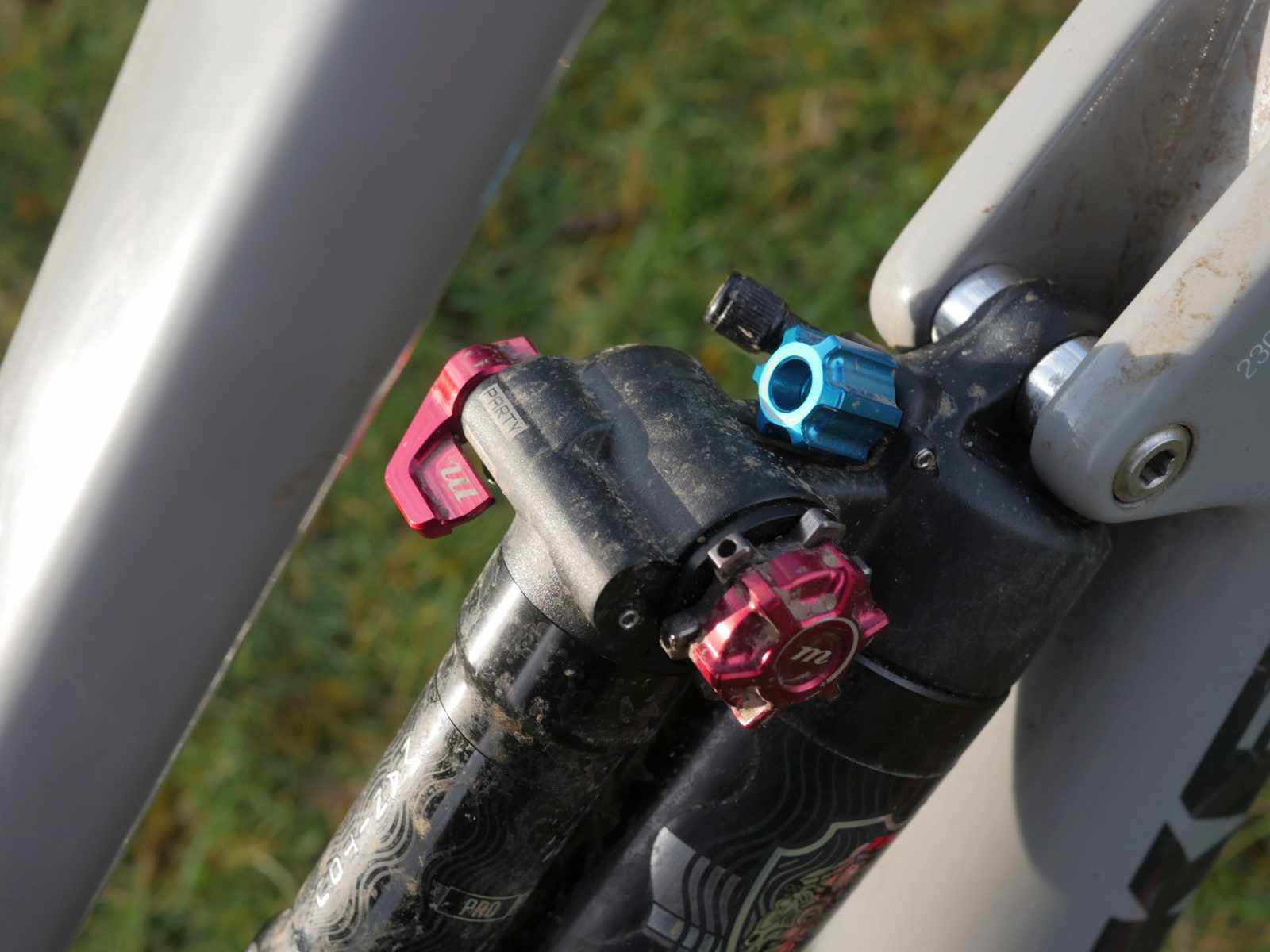
Without hardware, our 230x65mm Mara weighed in at exactly 600 grams. Not the lightest air shock (which is probably still this 98g one), but for a start, 230×65 is a much bigger shock size than most bikes are designed to take, and this one comes in sizes from 200×56 to 250×75, so their claimed weight of 435g will be for a smaller one.
Secondly, you’re not really going to get gravity-focussed performance by shaving weight from your suspension. If you want to shed grams from an enduro bike, I’d strongly suggest the shock not be the component you do it with.
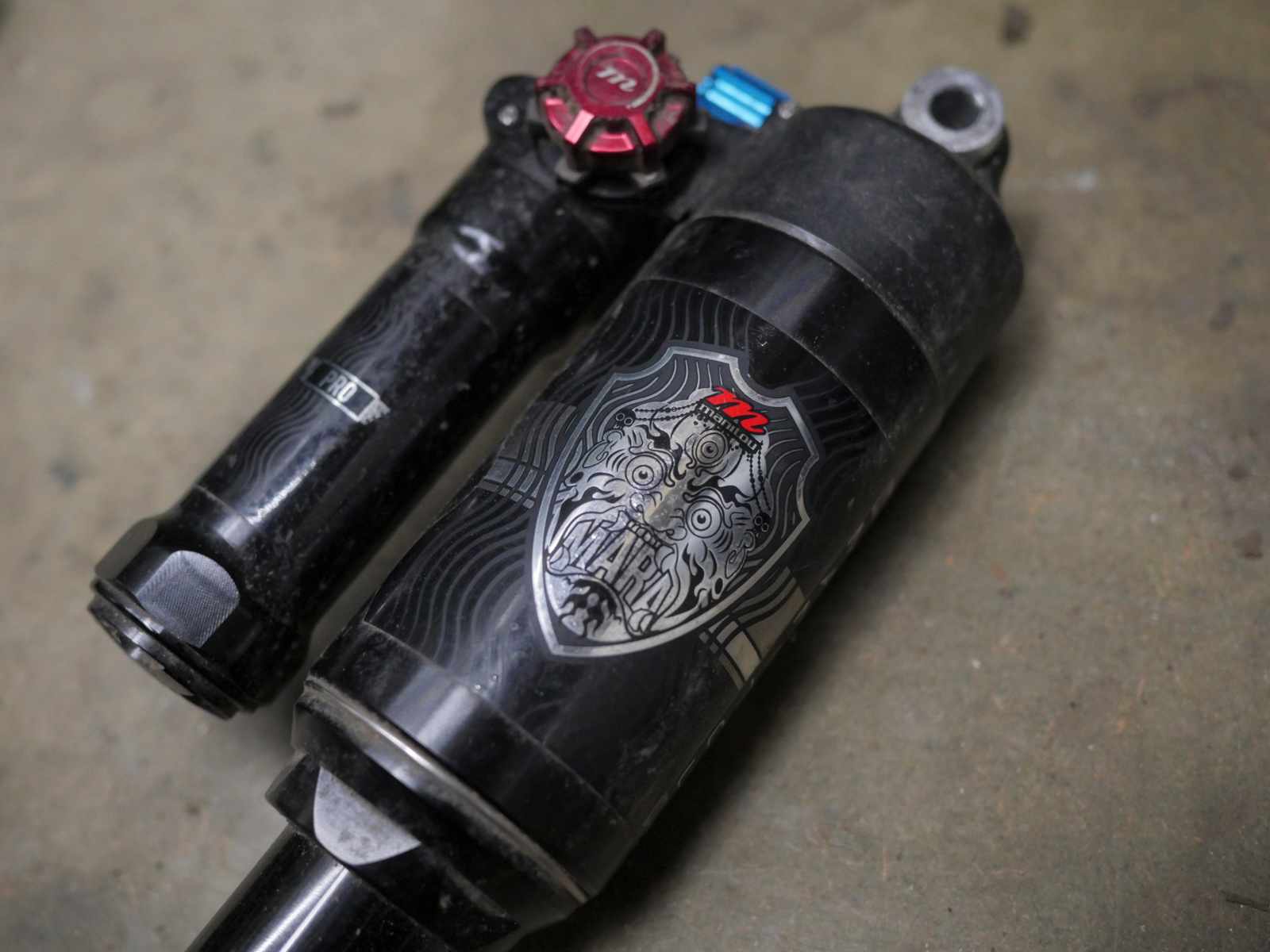
Overall
After two months on the Mara, I’m happy to report I’m still not dead, and that this shock is, in fact, the life of the party. With a wide range of settings, it’ll be diallable off-the-shelf to suit most riders, and upcoming tuning options will really open that up. Small bump compliance is exceptional for an air shock. Coupled with good support and progression, that makes that Mara a high performing, rock-solid option for those looking to upgrade their air shock.
Review Info
| Brand: | Manitou |
| Product: | Mara Pro |
| From: | http://www.hotlines-uk.com |
| Price: | £499.99 |
| Tested: | by Davd Hayward for 2 Months |
